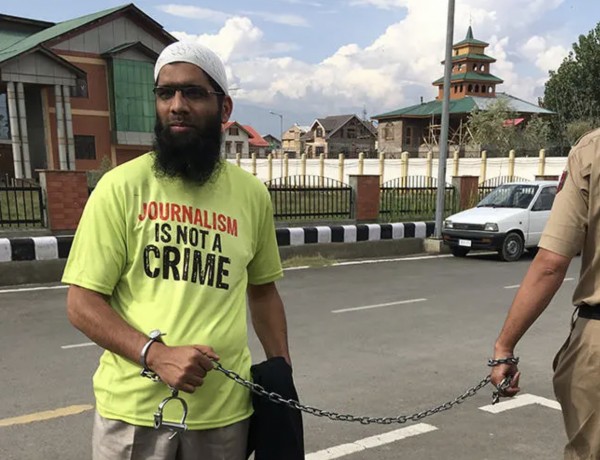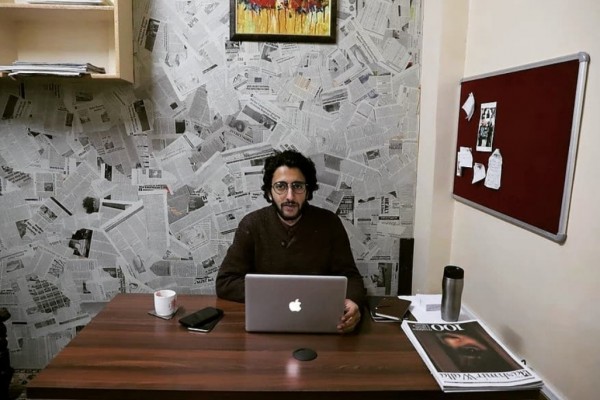Physical attacks against journalists as well as arrests under often-archaic laws interpreted beyond their legitimate scope to clamp down on critical journalists are only some of the tactics adopted by the government of President Modi to silence independent journalists in India. Furthermore, with mainstream media, in particular TV stations, increasingly forced to unquestioningly parrot the government’s line, the government has passed new laws specifically targeting online news outlets.
Editors in the country are walking a tightrope in a bid to maintain their independence. Those who do not fall in line face the wrath of the government, are denied advertising revenue, and labelled anti-nation. Journalists who are critical of the government are attacked on social media by both leaders and supporters of the ruling BJP. There have also been allegations that the government carried out shocking and illegal surveillance of journalists using Pegasus spyware. In a welcome move, on October 27, India’s Supreme Court ordered an independent inquiry into whether the government used Pegasus to illegally surveil journalists, political opponents, and activists.
In the past 10 years, as many as 51 journalists have been killed in the country and all these cases have so far remained unsolved, resulting in growing impunity for crimes against journalists. Most were killed in targeted attacks and were working for regional-language media outlets, with high local readerships but also under severe pressure from the ruling party.
India also accounts for the highest number of pandemic-related press freedom violations in the region. Between February 2020 and May 2021, at least 56 journalists were arrested or charged under various criminal laws as a consequence of their efforts to cover the pandemic; and at least 14 journalists were subjected to physical attacks by authorities. The Indian government has resorted to diverse means to prevent independent media from criticizing its handling of the pandemic. In March 2020, the government unsuccessfully petitioned the country’s Supreme Court to bar the media from publishing information on COVID-19 that had not been cleared by the government. The apex court refused to intervene but directed the media to “refer to and publish” the official version of the developments.
Over the past five years, the government and its law enforcement machinery also increasingly resorted to the use of an archaic anti-sedition law to silence critical journalists.
Over the years, India’s Supreme Court has repeatedly ruled to narrow the scope of the anti-sedition law to ensure it isn’t used to limit media freedom. Already in the landmark 1962 Kedar Nath Singh judgment, the Supreme Court stated that mere criticism of the government was not seditious unless it incited violence or disturbed public order. This position was reiterated in March this year, when the Supreme Court struck down sedition charges brought against two news channels by the Andhra Pradesh police noting that “criticising the government can’t be termed sedition”. Again in a decision published on June 3, the Court repeated that “a citizen has a right to criticise or comment upon the measures undertaken by the government”.
Although India’s apex and other courts have ruled in favour of media freedom, this has not prevented the police from filing charges against journalists for their reporting and social media posts under the anti-sedition law as well as other laws such as the National Security Act, the Unlawful Activities Prevention Act, and the Disaster Management Act.
In April this year, as India faced thousands of COVID-19 deaths every day, the government of the northern state of Uttar Pradesh ordered officials to apply the National Security Act and seize the property of individuals who spread “rumours” on social media claiming that hospitals were struggling to maintain their oxygen supplies. The order came as media reports highlighted oxygen shortages and the rising number of deaths in the state. Again, India’s Supreme Court intervened, ruling that a clampdown on COVID-19 information would amount to contempt of court.
In a highly criticized move, in February this year, the Indian government announced the controversial Information Technology (Intermediary Guidelines and Digital Media Ethics Code) Rules, 2021. Part III of the rules pertains to digital news publishers and publishers of online curated content. The new rules introduce a three-tier grievance redressal mechanism to be overseen by a committee of government officials. At the first tier, publishers are required to appoint a Grievance Redressal Officer to respond to complaints within 15 days. The second tier provides for self-regulatory bodies to be appointed by the news organizations themselves, following the guidelines of the government on the structure of such bodies. Finally, the third tier comprises an oversight body set up by the Ministry of Information and Broadcasting to hear appeals to decisions made at the second and third tiers. The oversight body would have the power to order the deletion or modification of content in certain cases. In addition, the rules grant “emergency powers” to the government oversight body to block online content when “no delay is acceptable”. In those circumstances, the blocking of content could be ordered without requiring the publisher of the information to first be heard.
Digital media publications have filed petitions in court against the new rules and have accused the government of circumventing parliament to implement them. The IT Rules allegedly stemmed from the need to limit the dissemination of dissemination and hate speech on social media platforms. Conveniently, however, the scope of the rules was extended to include online news outlets, many of which are known for their critical stance towards the government.
The new IT Rules not only place online news outlets under the direct control of state organs but have also received criticism for encouraging internet platforms to over-censor and requiring them to retaining a large amount of data to be handed over to the government.
In an encouraging trend, high courts have expressed concerns about the constitutionality of different parts of the new IT Rules. The ruling by the Madras high court in September this year is particularly significant as it refers to the eight subject matters under Article 19(2) of the Indian Constitution that provide grounds for legitimate restrictions of free expression. “Falsity” and “intent to mislead”, to which the IT Rules refer, are not part of the eight legitimate grounds for limiting free expression. As such, the court stated, the restrictions foreseen by the IT Rule go beyond those constitutionally accepted.
Discrimination and attacks against journalists in connection with their ethnicity or religion have also become a common problem in India, with Muslim journalists and women often on the receiving end of the harassment. The intersectionality of gender, religion, and ethnicity of journalists is behind many cases of physical and online harassment, which often inevitably results in self-censorship and a great loss precisely of those voices that are already underrepresented.
Special attention needs to be given to developments in Indian-administered Kashmir, where independent journalism has been essentially driven out due to an exceptionally hostile climate towards journalists and news organizations. Following the Indian government’s move to end the region’s autonomy in 2019, access to the internet was blocked completely for six months before being partially restored but only with 2G speed. Numerous local news outlets have been denied government advertising, which represent a core source of income for all media in the region, without which survival is almost impossible. As a consequence, many journalists lost their jobs while other news outlets were forced to practice self-censorship and stick to the government line in order to avoid losing advertisements. Furthermore, the authorities have also been intimidating journalists with unexpected summons or home raids, which sometimes last for hours, while also seizing journalists’ mobile phones, notebooks, and laptops.
With systemic censorship on the rise and journalists facing constant threats from the government as well as other political outfits, the future of independent journalism in India today is in the hands of those institutions that have been struggling to retain their independence and promote journalistic rights: most importantly the courts, but also editors and journalists’ associations and independent news media themselves.



